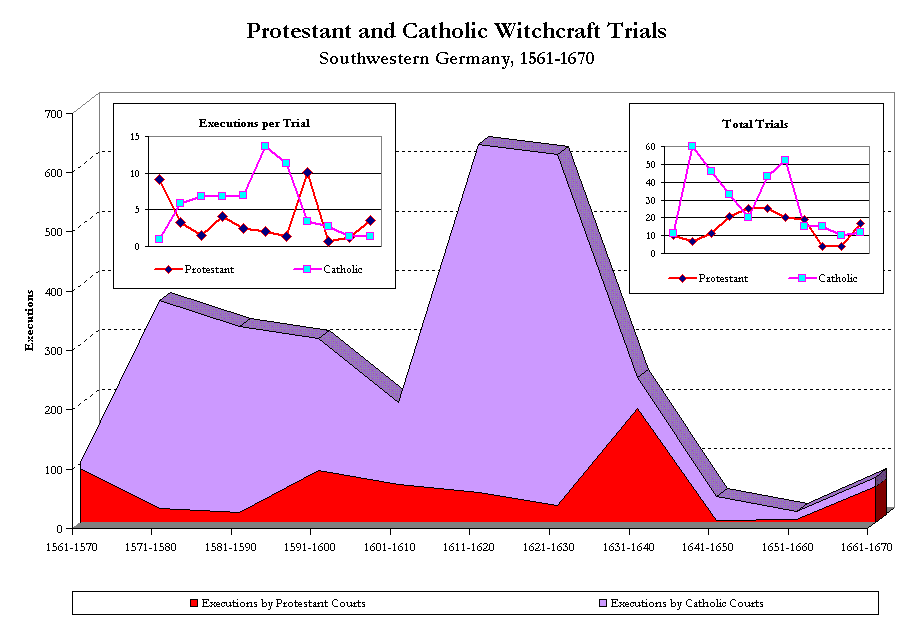
These data yield a sharp contrast between Protestant and Catholic jurisdictions. In southwestern Germany, Protestants carried out 163 trials and executed 620 persons during the period; Catholic courts conducted far more trials (317) and executed far more people (2333). The overall severity of Catholic persecutions was approximately double that of Protestants, 7.4 to 3.8 executions per trial. These data seemed to confirm the old Protestant explanation for witch-hunts.
But this conclusion is shaky for two reasons:
1) First, it does not consider variations over time. Catholic trials were always more severe, but the difference was not great before 1600 or so. If we examine the trials before and after 1600, we find that sixteenth-century Catholic trials were only 20-30 percent more severe than the Protestant trials conducted there during the same period. After 1600, the number of executions per trial increased in Catholic jurisdictions, but fell in Protestant ones.
2) Second, historians have long argued that there were no significant differences between Catholics and Protestants in their beliefs regarding witchcraft. Instead, we are told, both confessional coalitions were divided internally between advocates of a moderate, "providential" concept of witchcraft that explained it as God's punishment for human wickedness and a more punitive theory animated by the fear of black magic. If there were no confessional differences in demonological theory, how can one explain the fact that German Catholics were more severe prosecutors than their Protestant neighbors?
Confessional differences in the pattern of witch persecution prompts us to reexamine the idea that Protestants and Catholics displayed no marked differences.
Protestant arguments tended to claim that Catholicism was inherently magical, "since many of its rituals relied on securing material effects from non-material causes--blessings, exorcisms, hallowings, and the like" (Clark, 533).